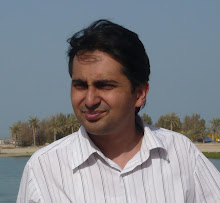 |
| Tabla Maker Qaiser Hussain |
One of the most demanding, yet understated crafts is the art of instrument making. Painstaking effort and expertise go into the construction of each musical instrument to give artists outstanding professional quality. The process is made even more difficult when a craftsman has to translate the musician’s demands into an instrument which is able to replicate the musical expression of the artist.
In South Asia, instrument making like many other traditional art forms is more or less considered a hereditary profession, where the knowledge is passed on from generation to generation, resembling a mentor- apprentice relationship otherwise known as the ‘ustad-shagird silsila’. One such group constitutes the tabla makers of Dhonkal and Dheerkay.
Located 80 kilometres from the cultural capital of the Punjab in Lahore, the village of Dhonkal had a reputation for being the centre point for building high quality tablas. This tradition goes back almost 250 years, beginning with Mian Baana, a resident of Dhonkal who is said to have been gifted the profession by his spiritual guru or ‘Pir’, Syed Qaim Din Shah. The art was subsequently passed down from generation to generation and relatives in the neighbouring village of Dheerkay.
Following partition, the Dhonkal- Dheerkay craftsmen shifted to urban centres of Lahore, Karachi, Rawalpindi and Peshawar. Today, the clan still proudly display the name of their respective villages on the signboards of their small and cramped shops, which symbolise the high standards of craftsmanship they were brought up with. A single instrument shop remains in Dhonkal serving as a nostalgic reminder to the village’s musical past.
 |
| The Tabla Makers of Karachi |
Pakistani tablas are renowned for the rich and roundedness of tone favoured by classical and qawwali tabla players. In particular, tablas tuned to a high pitch are considered a speciality. Leading tabla maker Qaiser Hussain states the main factors in making a good quality tabla are the selection of the skin, adjusting the thickness of the skin and ensuring its uniformity a process known as ‘manjhayee’ and the correct application of the black paste called ‘siyahi’.
The business of producing percussive instruments continued to thrive until the 1990s, but the increased use of electronic and western instruments, the lack of popularity of traditional music in Pakistan, and the economic downturn have created a drop in demand. Furthermore, increasing costs and scarcity of essential materials have also affected business. One thing continues; the makers do not compromise on quality.
 |
| Lahore made dayaan |
2012 is coming to a close and finally this writer has managed to write about the competition, provide details of the participants and post the results. We’ll proceed with the tabla making challenge and meet the makers in part two of this write up…..





Excellent write up.
ReplyDeleteSuper tabla maker qaiser hussian
ReplyDeleteGreat work! That is the kind of information that are meant to be shared around the net. Disgrace on the seek engines for now not positioning this submit higher! Come on over and talk over with my site . Thank you =)
ReplyDeletemultani pottery